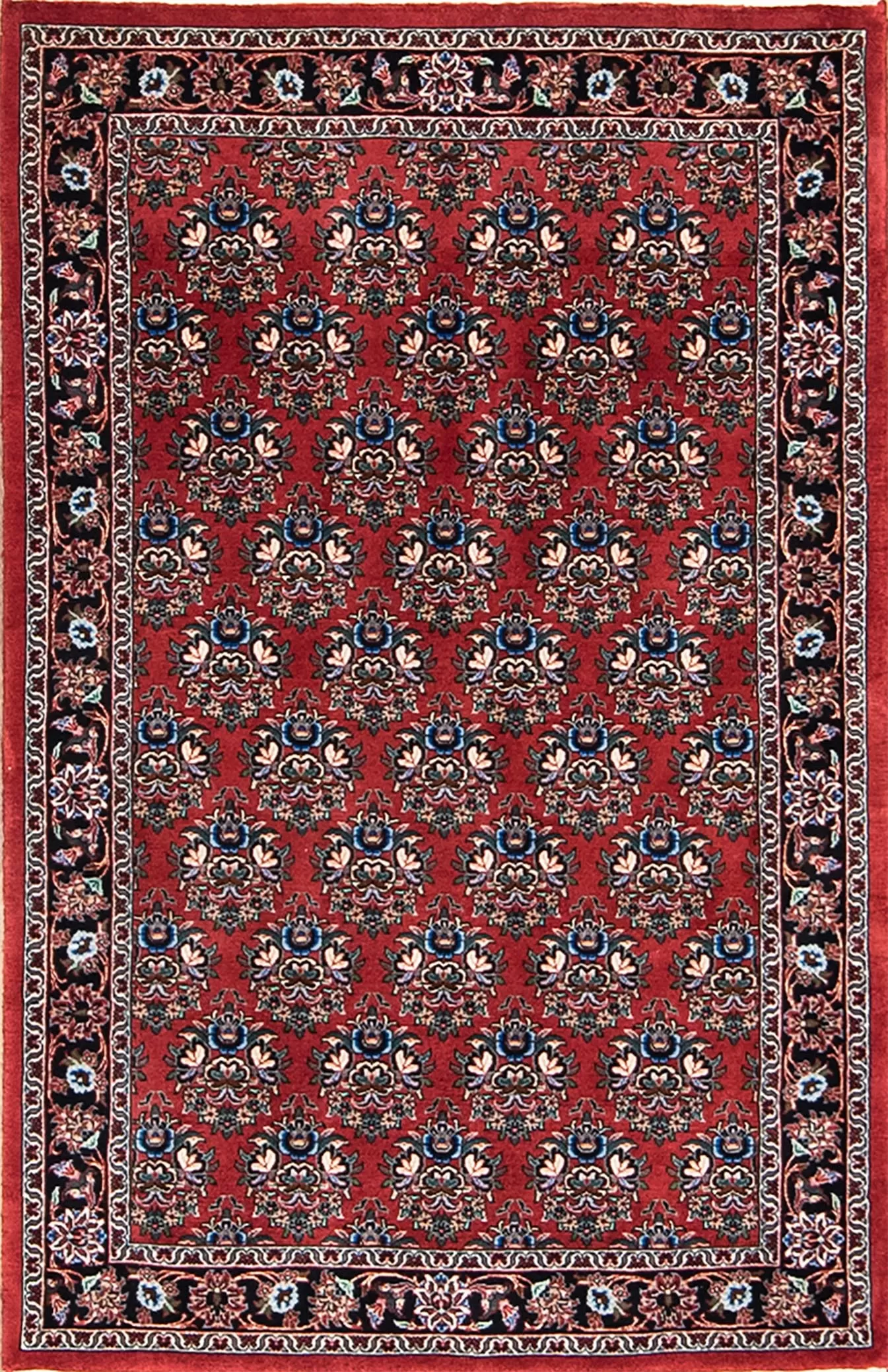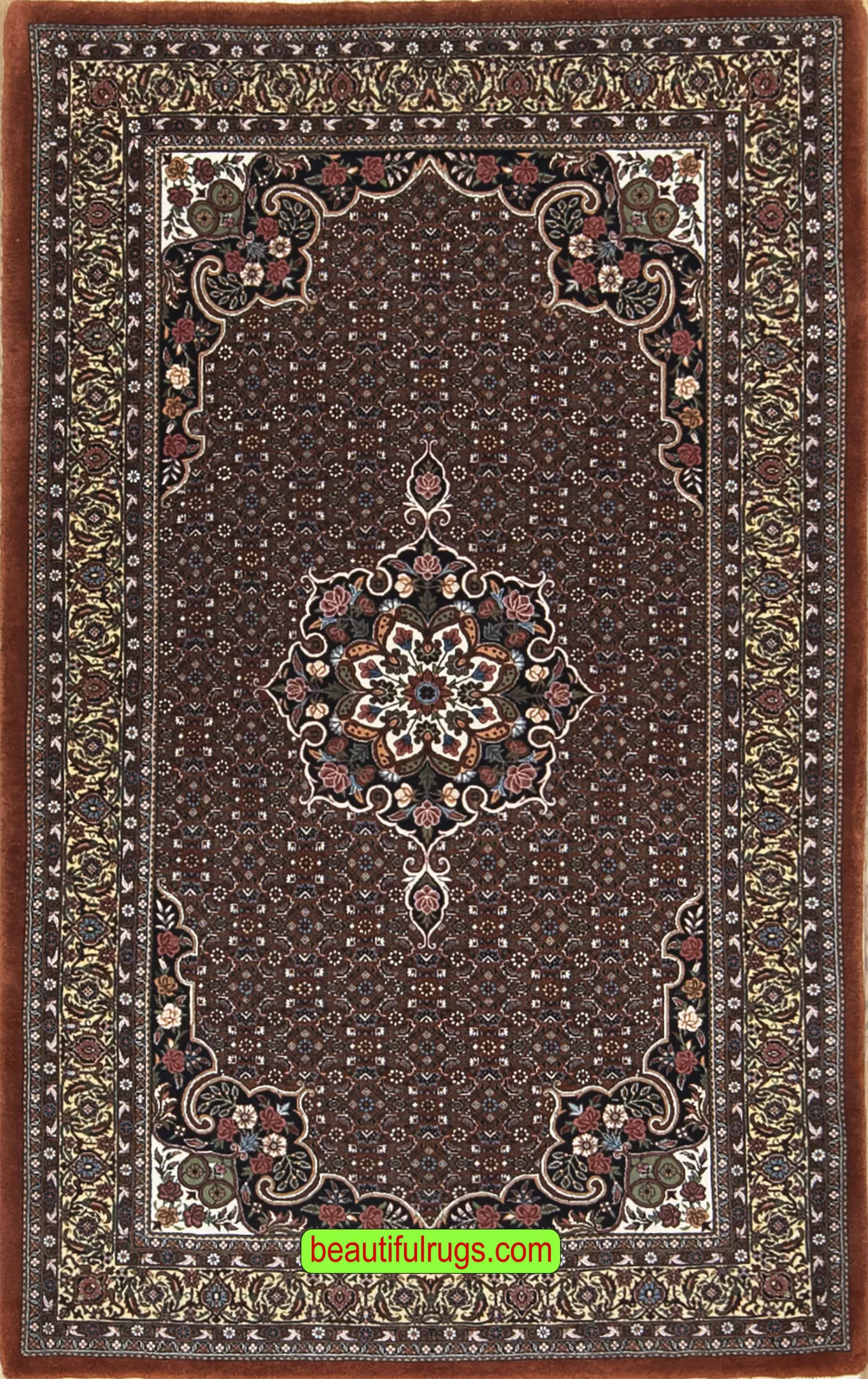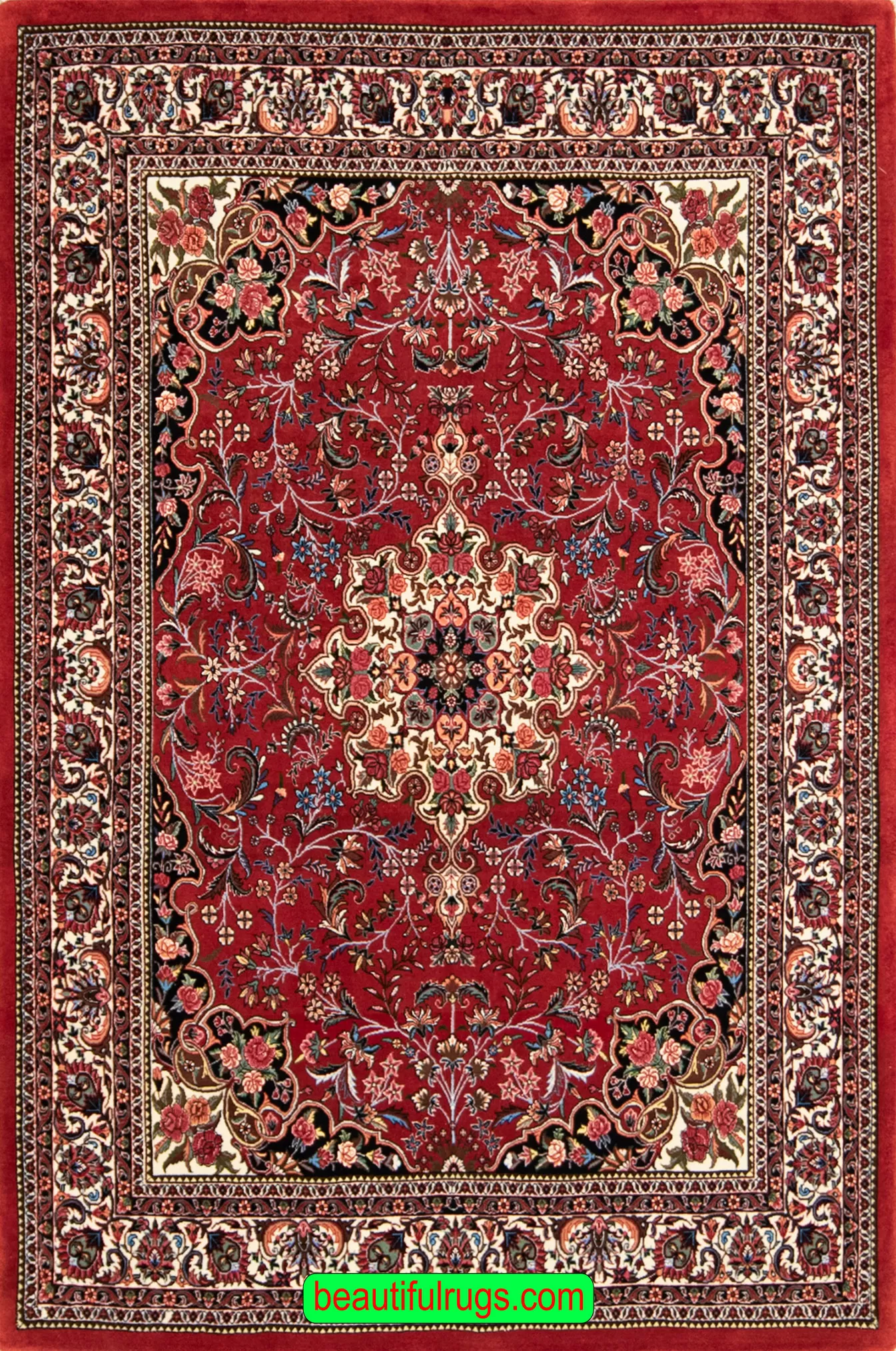Bijar Rugs, Antique Persian Bidjar Rug
Bijar, located in the northeast of Iran, in Kurdistan province, is a city and area called the Roof of Iran on account of its high elevation. This mountainous area is a historic Kurdish region, which is autonomous and where Kurdish, a Western Iranian language, is spoken.

Kurds make up the majority of the population. Bijar has been famous for its rugs since the time of the first Persian (Achaemenid) Empire in the 5th century BCE. Bijar (or Bidjar) rugs are made with a “wet weaving” technique: wool is dampened as it’s woven and then beaten down with an iron tool. After the wool dries, its fabric becomes compact, which makes the rug quite strong, durable and long-lasting. In fact, as a result of this special weaving process, it has been called the Iron Rug of Iran.
The Garrus (or Gerous) design in the 19th century that features split leaf arabesques in the field and borders was common in larger Bijar rugs. (Garrus was also the former name of the Kurdish region of Bijar, and it refers to a Kurdish subtribe.) The arabesque is a design motif consisting of intertwining branches, vines, or tendrils, usually with floral references or geometric forms. The Herati design pattern with a rosette in a diamond with leaves along its four sides is also common in Bijar rugs, as our rectilinear designs, medallion and pendant medallion, a stylized tree of life and cypress designs in the early 20th century. New Bijar rugs have less elaborate designs and use synthetic dyes.
Showing all 14 results
STYLES
-
Sale!

Mauve Rug, 3x5 Rug, Directional Persian Bijar Rug with Bouquet
Original Price:
Sale Price: $1,995.00Save: $1,505.00 (43%)
Read more- Sale!

Vintage Rug, Blue Persian Bijar Tree of Life Wool Rug
Original Price:
Sale Price: $860.00Save: $500.00 (36.8%)
Read more- Sale!

Thick Rug, Hand Knotted Blue Persian Bijar Rug for Entryway
Original Price:
Sale Price: $1,899.00Save: $829.00 (30.4%)
Read more- Sale!

Orange Area Rug, Persian Bijar Area Rug for High Traffic Area
Original Price:
Sale Price: $1,090.00Save: $730.00 (40.1%)
Read more- Sale!

Hand Knotted Rugs, Persian Bijar Rug with Blue and Chestnut Color
Original Price:
Sale Price: $1,744.00Save: $940.00 (35%)
Read more- Sale!

Beige Rug, Small Persian Bijar Wool and Silk Rug
Original Price:
Sale Price: $1,699.00Save: $749.00 (30.6%)
Read more- Sale!

Persian Carpet, Old Persian Bijar Carpet, Thick Wool Persian Carpets
Original Price:
Sale Price: $2,935.00Save: $1,765.00 (37.6%)
Read more- Sale!

Rug for Heavy Traffic Area, Thick Persian Bijar Rug with Rustic Brown Color
Original Price:
Sale Price: $3,995.00Save: $1,780.00 (30.8%)
Read more- Sale!

Colorful Rugs, Small Rug, Persian Red Bijar Rug
Original Price:
Sale Price: $1,750.00Save: $750.00 (30%)
Read more- Sale!

7x10 Area Rug, Floral Persian Bijar Rug with Rose Color
Original Price:
Sale Price: $8,500.00Save: $5,300.00 (38.4%)
Read more Sold Out
Sold OutMedallion Area Rug, Oriental Rug from Caspian Areas
Read more- Sale!

5x7 Rug, Handmade Persian Bijar Rug, Mauve and Rose Color Rug
Original Price:
Sale Price: $4,960.00Save: $535.00 (9.7%)
Read more Sold Out
Sold OutHandmade Antique Persian Bijar Rug, Floral Design Vegetable Dyed Rug
Read more Sold Out
Sold OutOld Persian Rug, Handmade Persian Bijar Rug, Traditional Red Rug
Read more - Sale!














